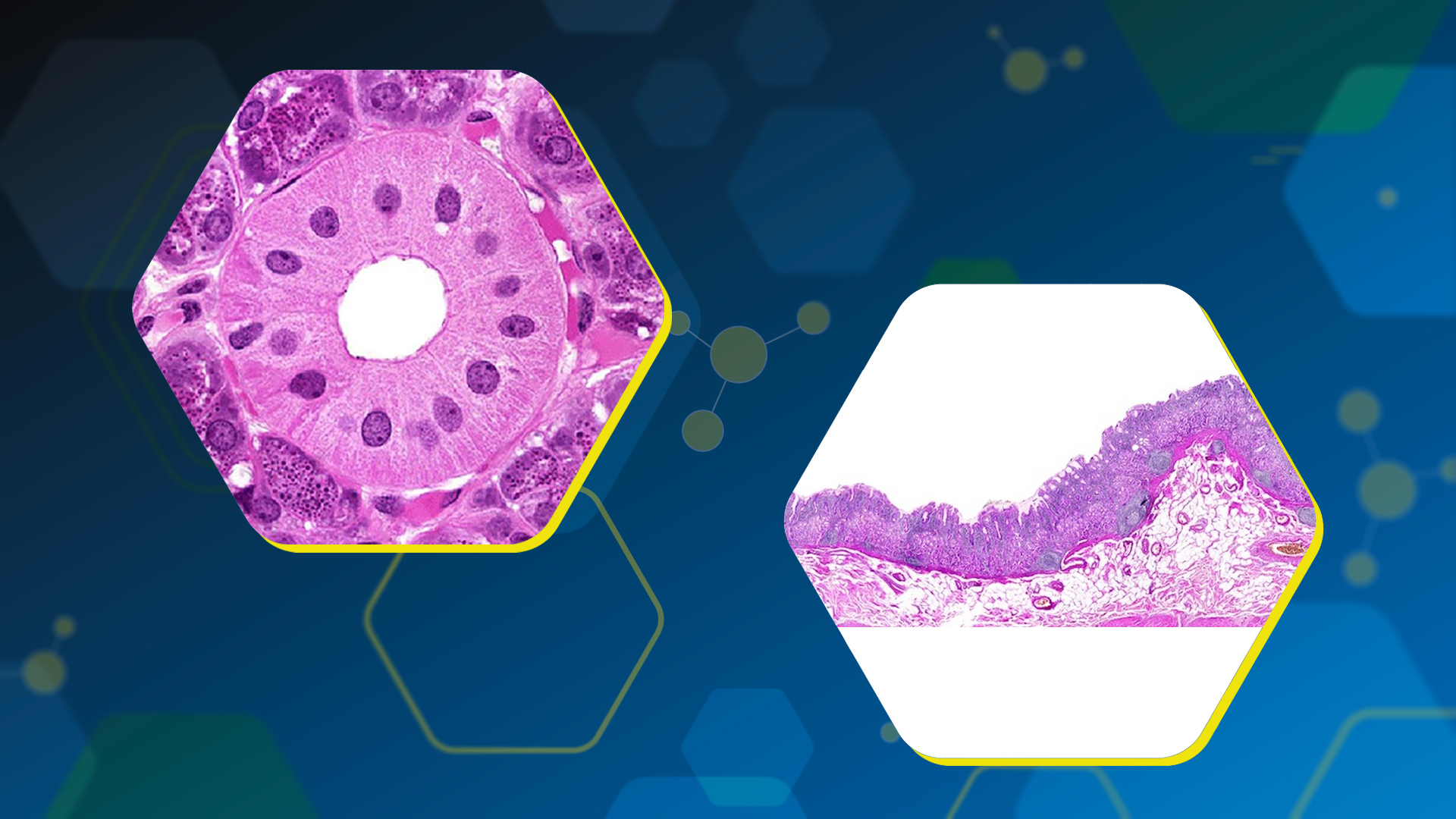Journey Through Time: From Gross Anatomy to Cellular Detail
Histology has evolved from early anatomical studies focused on gross structures to the detailed examination of cellular architecture enabled by the invention of the microscope. Pioneers like Marcello Malpighi and Antoine van Leeuwenhoek paved the way for modern histology, allowing us to understand the cellular organization that underpins our physiological functions. Histology is essential in diagnosing diseases and guiding treatment in medical education.
Limitations of Learning Histology by Traditional Methods
Traditional histology learning typically involves studying glass slides under a microscope in a laboratory setting. Here, students observe tissue samples, often prepared with stains to highlight specific structures and identify cells, tissues, and organ structures. This method offers hands-on experience but is limited by the availability of specimens and equipment, and may not always provide clear visualization or access to a wide range of samples.
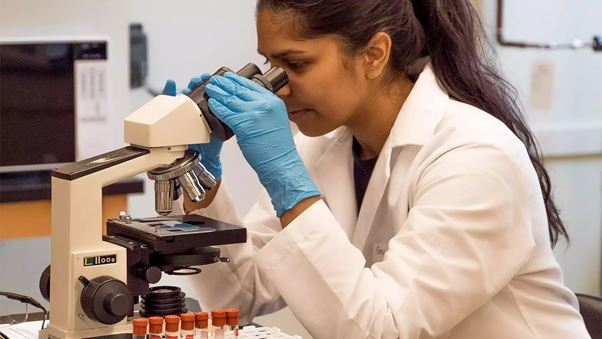
Benefits of CADAVIZ Over Traditional Methods of Learning Histology
Explore the intricate world of histology with CADAVIZ, India’s first virtual human dissection table. CADAVIZ transforms the landscape of education, providing medical students with an interactive and precise learning experience that surpasses conventional methods. Dive into the microscopic realm of tissues and gain a profound understanding of human histology at its core.
Histology, the study of tissues at the microscopic level, reveals the fundamental building blocks of our anatomy and physiology. With CADAVIZ, students can explore this intricate world with unparalleled clarity and detail, moving beyond the limitations of conventional dissection and microscopy.
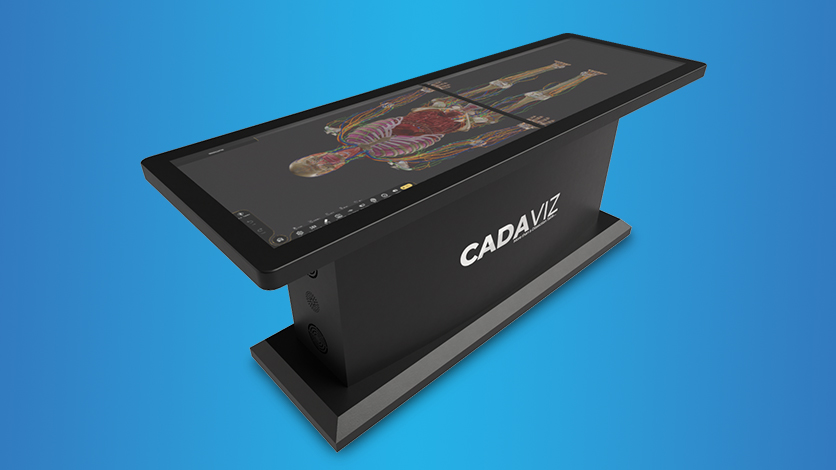
Traditional methods for histology learning, primarily microscopy-based, present several challenges. Access to well-prepared tissue samples is limited due to reliance on physical slides and microscopes. Additionally, slide preparation, staining, and microscope adjustments consume valuable class time, hindering efficiency. Students often passively observe static images without the ability to explore further or manipulate them, making it difficult to grasp 3D structures from 2D sections.
Educators also face challenges in resource management, as maintaining slide collections and microscopes can be cumbersome and expensive. Teaching histology to large groups poses logistical complexities, and ensuring uniform quality across slides and sessions is essential.
In contrast, CADAVIZ offers significant advantages. CADAVIZ provides a virtual dissection table for interactive exploration of 3D histological and histopathological images, enabling students to view tissues from various angles and focus on specific structures with precision. Immediate access to diverse histological samples without physical constraints accelerates the learning process, while virtual specimens remain unchanged, ensuring consistent learning experiences for all students. Multiple students can engage in the simultaneous exploration of the same specimen, fostering collaborative learning.
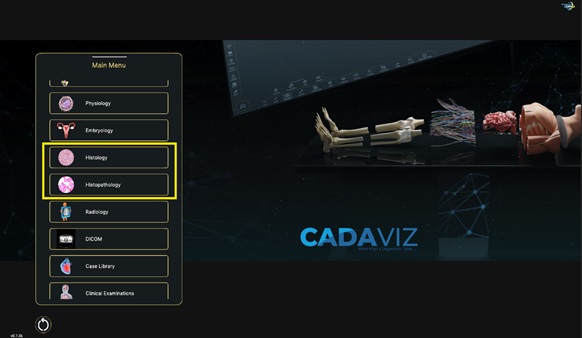
The educational impact of CADAVIZ is profound. It enhances student engagement through immersive learning experiences, facilitates faster coverage of material and enables comprehensive learning. Moreover, institutions can achieve cost savings on slide preparation and maintenance, making CADAVIZ a cost-effective solution.
CADAVIZ: A Game-Changer in Histology Education
CADAVIZ revolutionizes histology education with features designed to enhance practical learning like an extensive specimen library, detailed description of specimen, zooming capabilities of the specimen, features like the ability to take screenshots, visibility menu, and Histopathology section. Let’s dive into each feature in detail:
1. Extensive Specimen Library:
In traditional settings, medical students often have limited access to histology specimens. CADAVIZ addresses this challenge by offering over 100 accurately stained histological specimens of general histology and systemic histology, offering the specimen of all the systems in the human body, including those stained with Hematoxylin and Eosin and other special stains section that includes staining of different body tissues with special kind of stains. Through CADAVIZ, students can explore these specimens in detail, appreciating intricate tissue and cell structures. The platform provides high magnification and 3D visualization, along with detailed annotations and interactive quizzes to enhance learning. Thus, CADAVIZ revolutionizes histology education, providing students with comprehensive access to diverse histological samples to improve their understanding of tissue and cell biology.
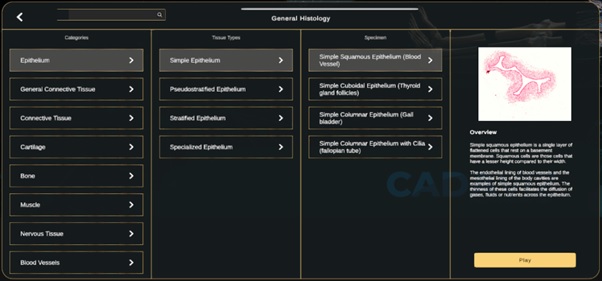
2. Extensive Learning:
In CADAVIZ, students benefit from an extensive menu of accurately labelled structures, enhancing their understanding of specimen microanatomy. Detailed descriptions accompany each label, aiding in identifying key tissue features. Traditional methods face limitations in labelling clarity and accessibility, especially in larger classes. CADAVIZ overcomes these restrictions, providing clear and comprehensive labels accessible to all students, revolutionizing histology education.
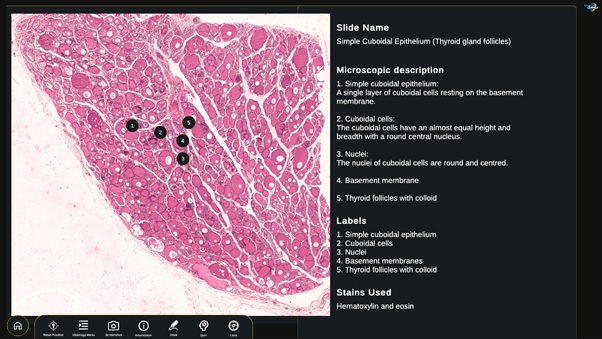
3. Advanced Zoom Capabilities:
The zooming feature in CADAVIZ enables students to zoom into specific fields and orientations, examining tissues at a cellular and sub-cellular level with precision. However, traditional learning methods limit student’s ability to access such detailed views due to microscope constraints and logistical challenges in large classes. CADAVIZ overcomes these restrictions, offering clear and detailed views of histological structures.
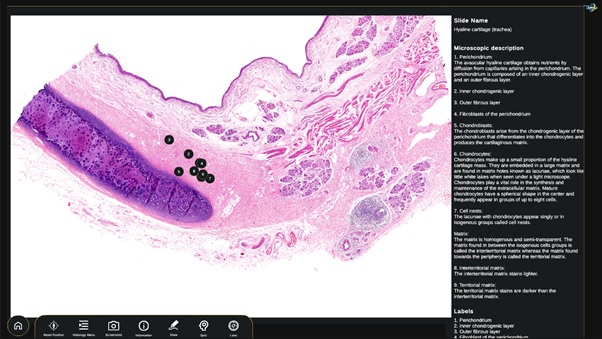
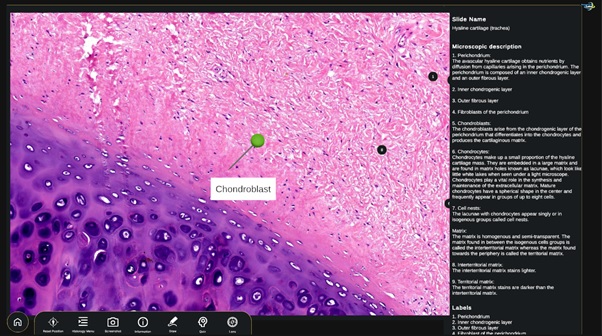
4. Screenshots and Annotations:
CADAVIZ allows users to capture high-quality screenshots of histological specimens, making it easy to document and review findings. The draw tools enable users to annotate images directly, highlighting specific structures and adding notes for future reference.
5. Visibility Menu:
The visibility menu enhances the learning experience by allowing users to toggle specific labels on and off. This feature helps in isolating and studying particular structures in detail, ensuring a comprehensive understanding of specimen microanatomy.
6. Histopathological Insights:
In CADAVIZ, students can explore over 100 histopathological specimens spanning different systems, including respiratory, gastrointestinal, cardiovascular, and nervous systems. Students can zoom to the nucleus level to examine cellular changes, reinforcing pathology identification and interpretation skills. This diverse collection enhances student’s diagnostic abilities and deepens their understanding of histopathology.
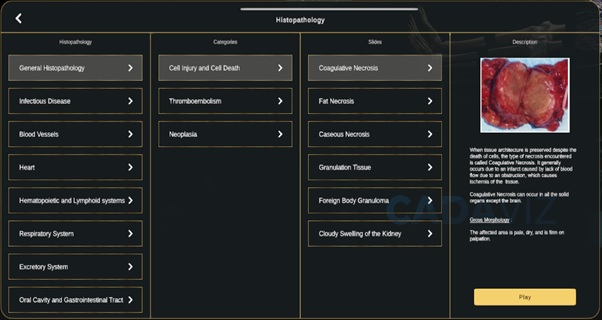
7. Interactive Sessions:
CADAVIZ enables multiple users to engage with two histological slides simultaneously, fostering collaborative learning. In traditional settings, students typically work individually with physical slides and microscopes, limiting interaction. With CADAVIZ, students can collaborate, discuss, and analyze complex histological structures together, enhancing comprehension and teamwork. This collaborative feature sets CADAVIZ apart from the traditional solitary learning approach, creating a dynamic and interactive educational environment.
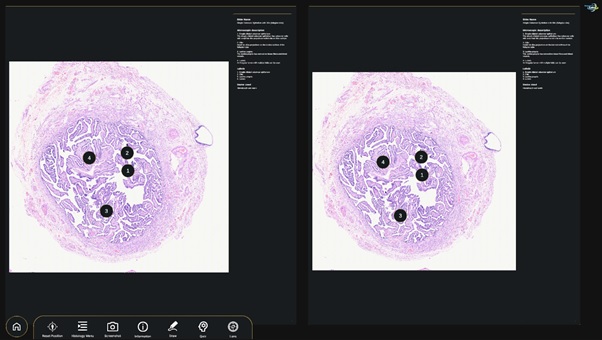
Benefits of CADAVIZ in Histology Education.
Enhanced Visualization:
Stunning HD Detail: CADAVIZ allows for the visualization of tissues and cells in high-definition detail, which significantly enhances the ability to appreciate and understand the intricate structure and organization of biological specimens.
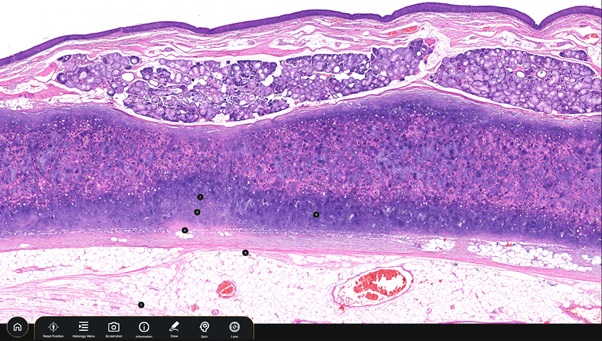
Interactive and Immersive Learning:
In-Depth Explanations: The CADAVIZ platform offers detailed explanations of both general and systemic histology, facilitating an interactive and immersive learning experience. This approach promotes active engagement, leading to better retention and understanding of complex histological concepts.
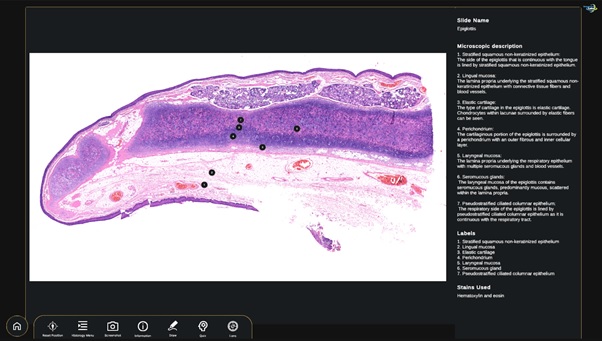
Accessibility and Scalability:
Overcoming Traditional Lab Constraints: CADAVIZ transcends the limitations associated with traditional laboratory settings, such as limited access to cadavers and advanced microscopy equipment. This makes high-quality anatomical education more accessible, particularly in regions with scarce resources, thereby democratizing education for a broader audience.
Comprehensive Understanding:
Holistic View of Tissue Structure: By providing detailed insights into tissue structure and function, CADAVIZ enables learners to gain a comprehensive and integrated understanding that is crucial for various aspects of medical practice. This holistic approach ensures that students are well-prepared for real-world medical challenges.
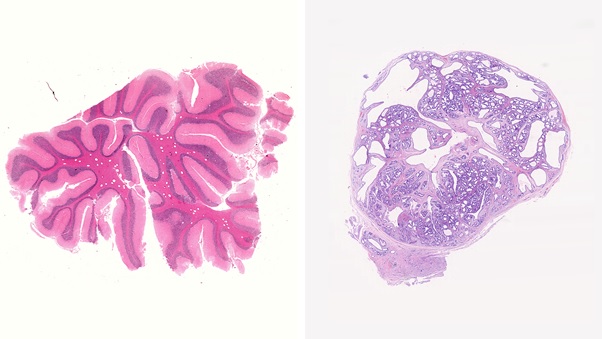
Explore the World of Histology with CADAVIZ
Are you ready to embark on a transformative journey into the microscopic world? With CADAVIZ, you can unlock the secrets of histology and discover a new dimension of anatomical understanding. This cutting-edge technology not only enhances the educational experience but also democratizes access to top-tier anatomical and histology education, paving the way for future medical professionals to excel.
Conclusion: A Gateway to Microscopic Marvels
Histology offers a profound insight into the cellular tapestry of life, underpinning our understanding of anatomy, physiology, and pathology. CADAVIZ, with its innovative virtual histology capabilities, revolutionizes anatomy education, empowering students to delve into the microscopic world with precision and interactivity. By exploring the intricate details of human tissues and cells, CADAVIZ fosters a comprehensive and engaging learning experience, preparing the next generation of medical professionals for a future in healthcare.
Explore the world of histology today with CADAVIZ and experience the future of education!
Writer – Aparna Relekar
Medical Content Writer

